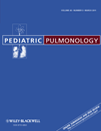Nasal high frequency percussive ventilation versus nasal continuous positive airway pressure in transient tachypnea of the newborn: A pilot randomized controlled trial (NCT00556738)
Abstract
Objective
To determine whether nasal high frequency percussive ventilation (NHFPV) would decrease duration of transient tachypnea of the newborn (TTN) compared to nasal continuous positive airway pressure (NCPAP) in newborn infants.
Methods
A prospective, unmasked, randomized, controlled clinical trial was conducted in 46 eligible newborn infants who were hospitalized for TTN in the University Hospital of Bordeaux (France) between 2007 and 2009. Infants born by cesarian section ≥37 GA, ≥2,000g with diagnosis of TTN and with a transcutaneous saturation <90% at 20 min after birth were eligible. Infants were randomized to either NHFPV or NCPAP. The primary endpoint was a reduction of the duration of TTN. Secondary endpoints were the duration of oxygen therapy and the minimal level required to obtain a saturation between 90% and 96% integrated into an index which included a time factor: [(FiO2—21)/time of O2 therapy].
Results
In the NHFPV group the duration of TTN was half the time of NCPAP group (105 min ± 20 and 377 min ± 150, respectively; P < 0.0001). There was a significant decrease in duration of oxygen supplementation in the NHFPV group (6.3 min ± 3.3) compared to the NCPAP group (19.1 min ± 8.1; P < 0.001), and a significant decrease in level of oxygen supplementation [(FiO2—0.21)/time of O2 therapy] in the NHFPV group (0.29 min−1 ± 0.16) compared to the NCPAP group (0.46 min−1 ± 0.50; P < 0.001). There was no complication and NHFPV was as well tolerated as NCPAP.
Conclusion
NHFPV is well tolerated and more effective than NCPAP in treatment of TTN. NHFPV might be a novel and safe tool to manage TTN. Pediatr Pulmonol. 2011; 46:218–223. © 2011 Wiley-Liss, Inc.




